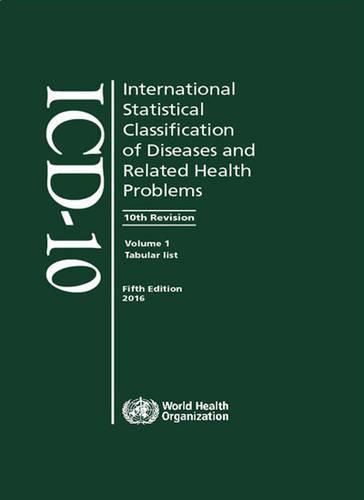Readings Newsletter
Become a Readings Member to make your shopping experience even easier.
Sign in or sign up for free!
You’re not far away from qualifying for FREE standard shipping within Australia
You’ve qualified for FREE standard shipping within Australia
The cart is loading…






ICD is used to classify diseases, accidents, reasons for encounter, and other health problems recorded on many types of health and vital records including death certificates and health records. In addition to facilitating the storage and retrieval of diagnostic information for clinical, epidemiological and quality purposes, the resulting records form the basis for compiling national mortality and morbidity statistics. It is a language-independent framework for classification of diseases and has been translated into more than 40 languages. ICD-10, Fifth edition, 2016 revision includes more than 100 edits, updates and clarifications since 2010. Volume 1 includes the introduction of the new WHO dengue classification, distinction between seasonal and zoonotic or pandemic influenza, update to the terminology of haematological tumours in line with the recent developments in the field, added detail for atrial fibrillation and flutter. The coding scheme of haemorrhoids has been updated and moved to the digestive system chapter. Further changes include a new code to document female genital mutilation, a range of emergency codes, and additional details for coding of antibiotic resistance. The reference to the outdated morphology codes has been totally eliminated, and users are now encouraged to use the histopathology list of ICD-O directly. In volume 2, instructions on mortality coding have been clariified without changing the rules. The appendices include the new death certificate, a form for the recommended additional information for perinatal deaths, and a flyer on how to fill in the medical certificate of cause of death. Volume 3 has been updated to match changes in Volume 1.
$9.00 standard shipping within Australia
FREE standard shipping within Australia for orders over $100.00
Express & International shipping calculated at checkout
ICD is used to classify diseases, accidents, reasons for encounter, and other health problems recorded on many types of health and vital records including death certificates and health records. In addition to facilitating the storage and retrieval of diagnostic information for clinical, epidemiological and quality purposes, the resulting records form the basis for compiling national mortality and morbidity statistics. It is a language-independent framework for classification of diseases and has been translated into more than 40 languages. ICD-10, Fifth edition, 2016 revision includes more than 100 edits, updates and clarifications since 2010. Volume 1 includes the introduction of the new WHO dengue classification, distinction between seasonal and zoonotic or pandemic influenza, update to the terminology of haematological tumours in line with the recent developments in the field, added detail for atrial fibrillation and flutter. The coding scheme of haemorrhoids has been updated and moved to the digestive system chapter. Further changes include a new code to document female genital mutilation, a range of emergency codes, and additional details for coding of antibiotic resistance. The reference to the outdated morphology codes has been totally eliminated, and users are now encouraged to use the histopathology list of ICD-O directly. In volume 2, instructions on mortality coding have been clariified without changing the rules. The appendices include the new death certificate, a form for the recommended additional information for perinatal deaths, and a flyer on how to fill in the medical certificate of cause of death. Volume 3 has been updated to match changes in Volume 1.